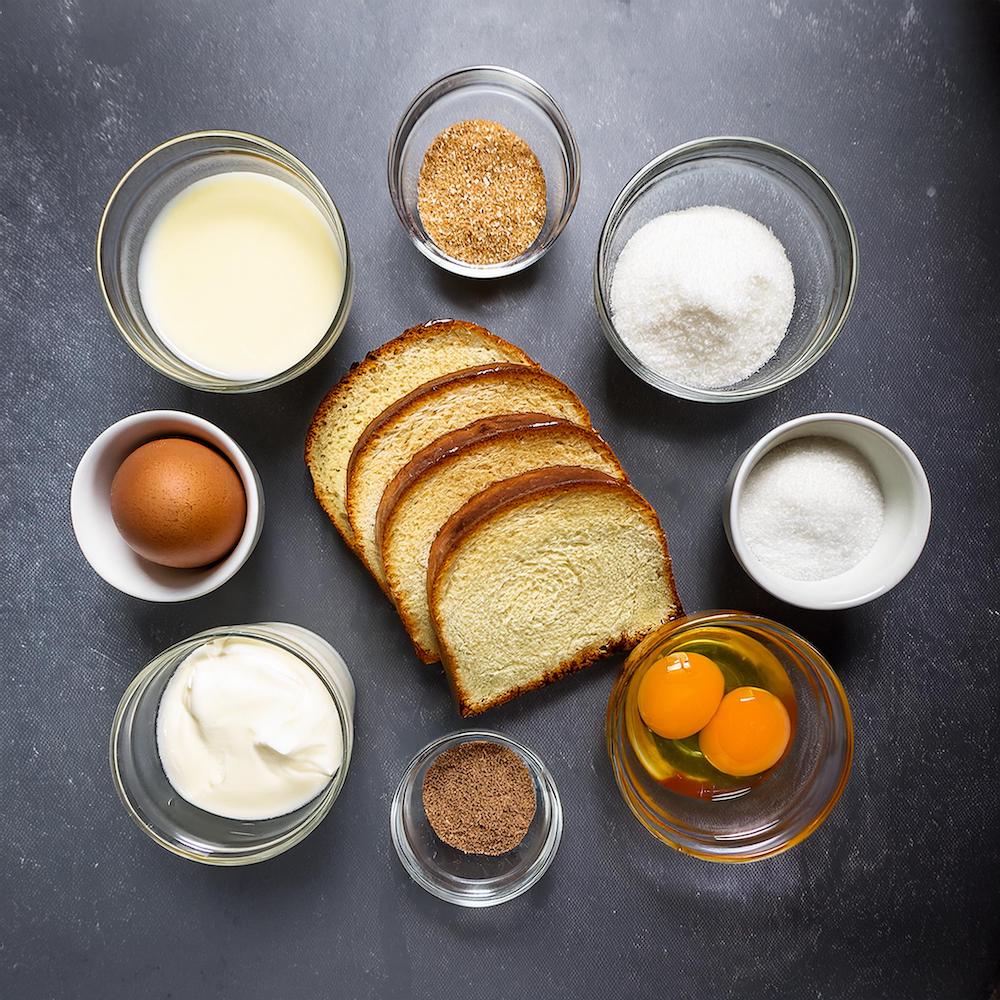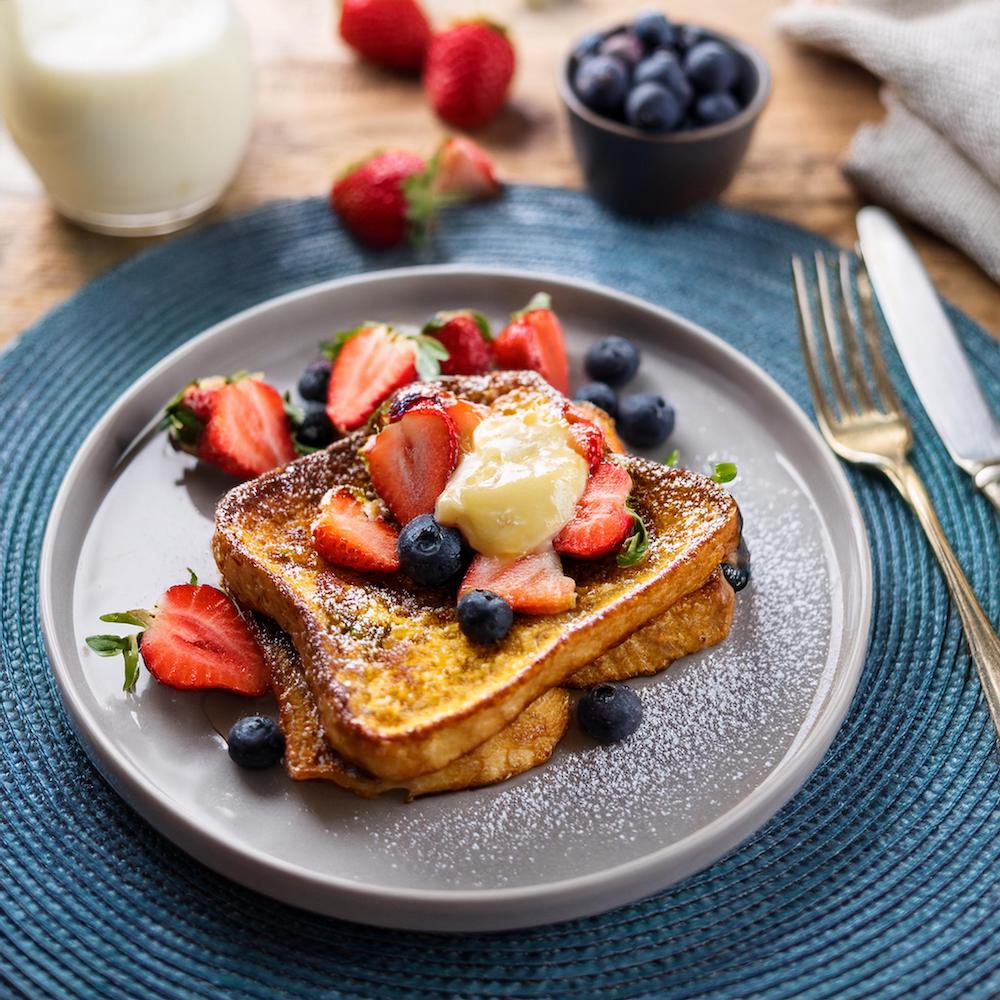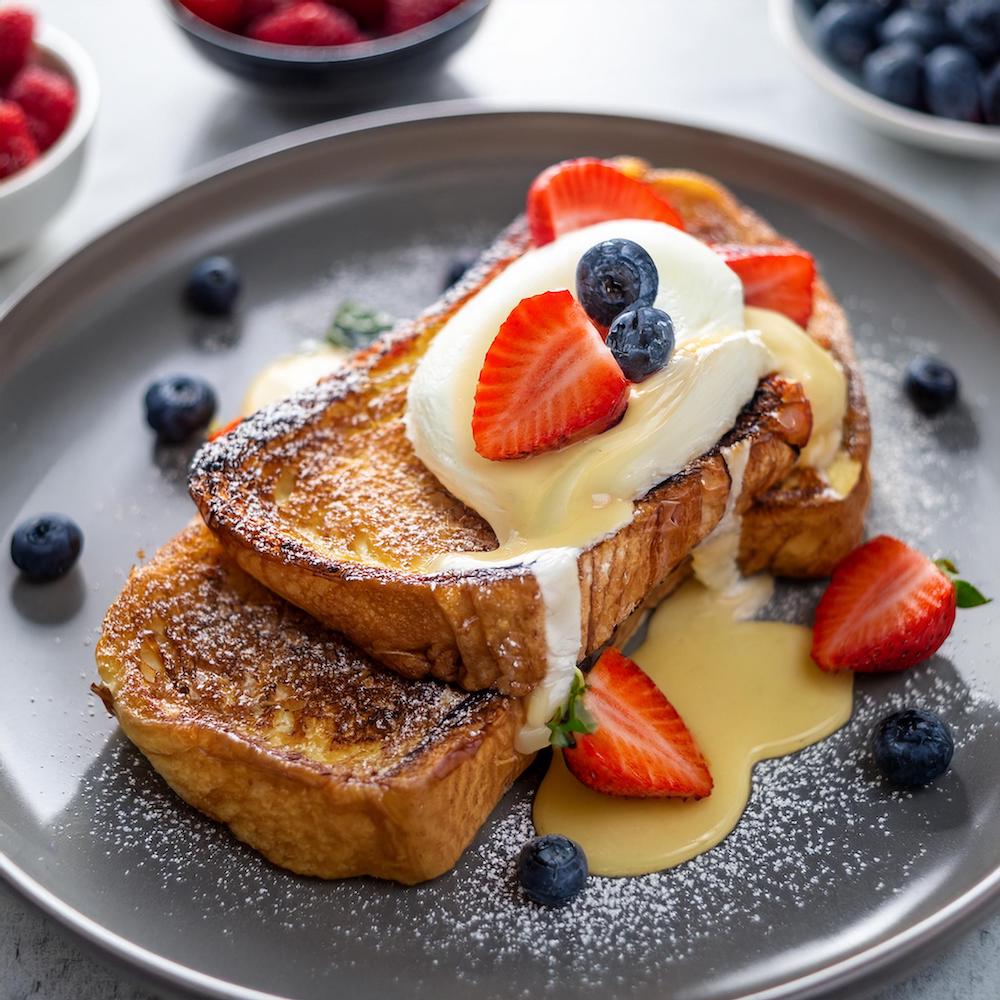This buttermilk French toast recipe is a decadent take on a breakfast classic. The tangy richness of buttermilk elevates the flavor, creating a soft, custardy interior and golden, crispy edges. Whether served with syrup, fresh fruit, or powdered sugar, this buttermilk French toast recipe is perfect for weekend brunches or special occasions. Quick and easy to make, this buttermilk French toast recipe will become a family favorite.
Ingredients:
Ingredients for the buttermilk French toast recipe:
- 6 slices of thick-cut bread (brioche or challah works best)
- 2 large eggs
- 1 cup buttermilk
- 1 tbsp granulated sugar
- 1 tsp vanilla extract
- 1/2 tsp ground cinnamon
- Pinch of salt
- 2 tbsp unsalted butter for frying
- Optional: maple syrup, powdered sugar, or fresh berries for serving

Execution
Step-by-Step Method for the buttermilk French toast recipe:
- Prepare the custard: In a shallow dish, whisk together eggs, buttermilk, sugar, vanilla extract, cinnamon, and salt until smooth.
- Soak the bread: Dip each slice of bread into the custard mixture, ensuring both sides are evenly coated. Let the bread soak for 20-30 seconds per side.
- Heat the skillet: In a large skillet or griddle, melt 1 tablespoon of butter over medium heat.
- Cook the French toast: Place the soaked bread slices onto the skillet. Cook for 2-3 minutes per side, or until golden brown and crisp. Work in batches, adding more butter as needed.
- Serve: Transfer the cooked French toast to a serving plate. Top with your favorite toppings, such as syrup, powdered sugar, or fresh fruit. Serve warm.

Tips:
For the Best buttermilk French toast recipe:
- Use day-old bread: Slightly stale bread absorbs the custard better without falling apart.
- Keep warm: Place cooked French toast on a baking sheet in a 200°F (95°C) oven to keep warm while frying the remaining slices.
- Add extra flavor: Sprinkle a pinch of nutmeg or orange zest into the custard for a unique twist.
- Make ahead: Prepare the custard the night before and store it in the refrigerator for a quick breakfast.
FAQs:
- What should we avoid when making French toast? Avoid using bread that is too fresh or too thin, as it may fall apart when soaked in the custard mixture. Bread that is slightly stale or thicker slices works best. Don’t rush the soaking process; ensure the bread absorbs the buttermilk mixture evenly. Also, avoid cooking on high heat, as this can burn the outside before the inside is fully cooked. Lastly, refrain from over-soaking, which can make the toast soggy.
- What’s the difference between Texas French toast and French toast? The main difference lies in the bread used. Texas French toast is made with Texas toast, a thicker and more substantial bread, which creates a heartier and fluffier texture. Regular French toast can be made with any type of bread, such as brioche, challah, or sourdough, and often results in a softer and more delicate texture.
- Does the milk matter in French toast? Yes, the milk matters in French toast as it contributes to the custard base. Buttermilk, for instance, adds a tangy flavor and richness to the dish, elevating the overall taste. Whole milk is commonly used for a creamy texture, but you can also experiment with dairy-free alternatives or heavy cream for a richer result. The type of milk you choose can affect the flavor and consistency of the custard.
- What is the trick to not soggy French toast? To avoid soggy French toast, use bread that is slightly stale or dry and cut into thick slices. Ensure the bread is evenly soaked but not overly saturated in the custard. Cook the toast over medium heat, allowing it to cook through without burning. Using a well-heated skillet or griddle with butter or oil also helps create a crisp exterior while keeping the inside soft but not wet.



